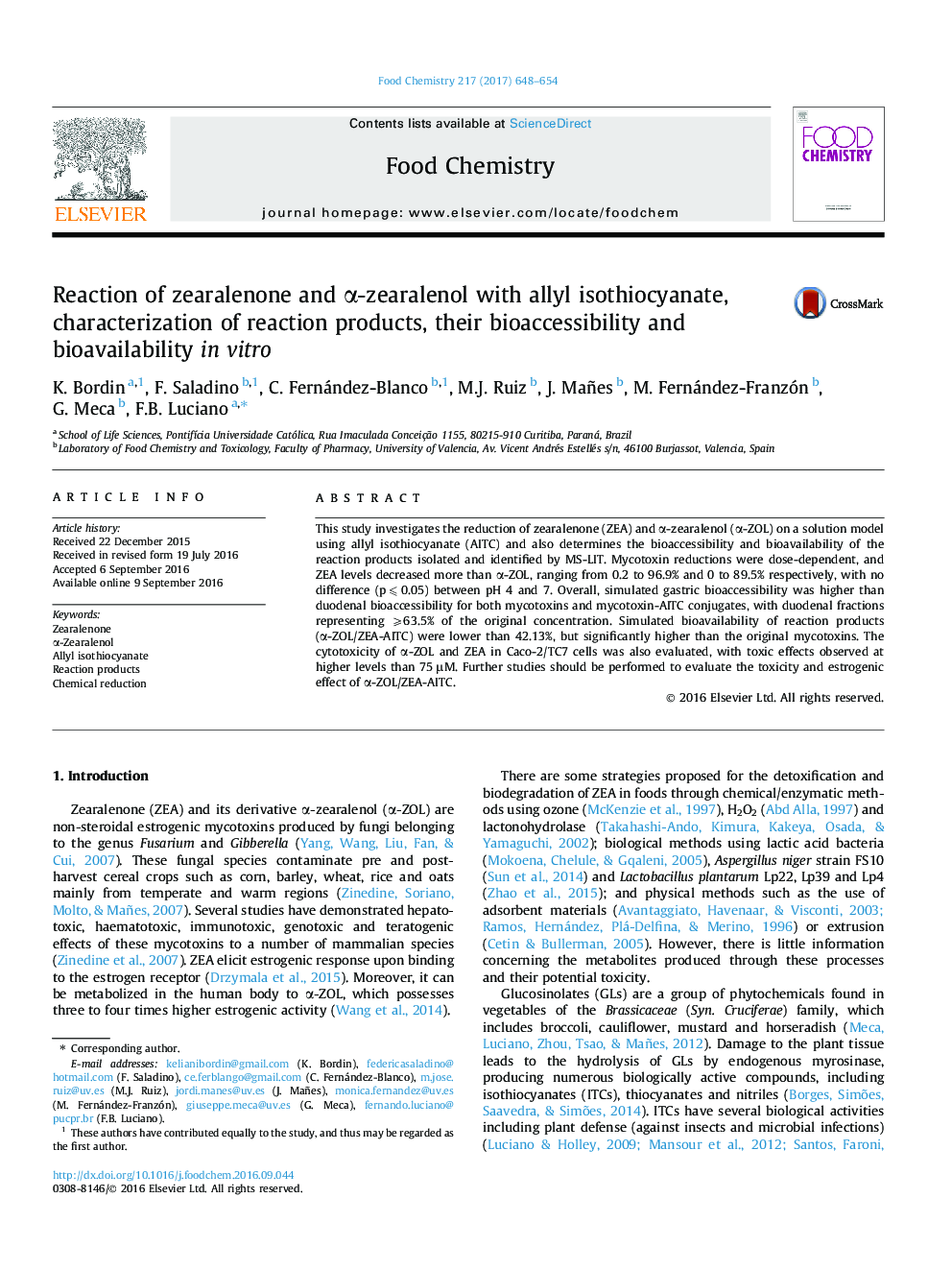| Article ID | Journal | Published Year | Pages | File Type |
|---|---|---|---|---|
| 7586790 | Food Chemistry | 2017 | 7 Pages |
Abstract
This study investigates the reduction of zearalenone (ZEA) and α-zearalenol (α-ZOL) on a solution model using allyl isothiocyanate (AITC) and also determines the bioaccessibility and bioavailability of the reaction products isolated and identified by MS-LIT. Mycotoxin reductions were dose-dependent, and ZEA levels decreased more than α-ZOL, ranging from 0.2 to 96.9% and 0 to 89.5% respectively, with no difference (p ⩽ 0.05) between pH 4 and 7. Overall, simulated gastric bioaccessibility was higher than duodenal bioaccessibility for both mycotoxins and mycotoxin-AITC conjugates, with duodenal fractions representing ⩾63.5% of the original concentration. Simulated bioavailability of reaction products (α-ZOL/ZEA-AITC) were lower than 42.13%, but significantly higher than the original mycotoxins. The cytotoxicity of α-ZOL and ZEA in Caco-2/TC7 cells was also evaluated, with toxic effects observed at higher levels than 75 μM. Further studies should be performed to evaluate the toxicity and estrogenic effect of α-ZOL/ZEA-AITC.
Related Topics
Physical Sciences and Engineering
Chemistry
Analytical Chemistry
Authors
K. Bordin, F. Saladino, C. Fernández-Blanco, M.J. Ruiz, J. Mañes, M. Fernández-Franzón, G. Meca, F.B. Luciano,
